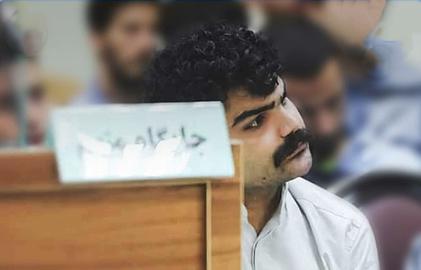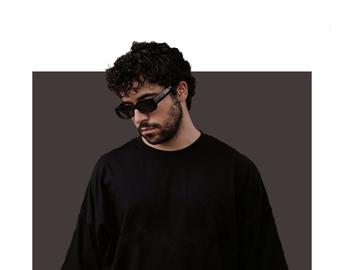Milza Diana, 66, wakes up every morning in her two-bedroom flat in the heart of São Paulo, Brazil, slides open the window, and looks out across Roosevelt Square at a gigantic mural of a curious young school girl reaching up into a whirlwind of books floating above her. Her feet are encircled by venomous creatures, including a scorpion, a spider, and a snake wrapped around her leg, ready to strike.
“She reminds me of my daughter, Marlene. I feel a connection to her,” Diana told IranWire, turning wistfully toward the mural.
The colossal artwork was painted by Apolo Torres, 30, a visual artist from São Paulo, for the Not A Crime campaign. The project — which has so far spanned six countries — raises awareness of the situation of Baha’is in Iran, who face persecution from the government, including being barred from studying at and teaching in universities. The painting stands 43 meters high and 12 meters wide. It is the largest mural created so far in the campaign, and is located in the very heart of the third largest city in the world.
Torres told IranWire that he immediately related with the cause behind the project when he heard about it last year. He said he’s concerned with divisive ideological issues getting in the way of people living normal lives. “That was the first time I ever heard about the Baha’i faith,” he said. He also wanted people in Brazil to be able to relate to the imagery, and so he told IranWire he decided to focus on issues specific to Brazil as well as the Baha’is.
In 2015, São Paulo students of all ages occupied hundreds of school buildings to protest against government plans to shut down 94 schools and bus over 300,000 students off to overcrowded schools in neighboring cities. Torres wanted to tackle this issue directly in his work. “I think the students standing up and fighting for their right to education was a good issue for the mural to address,” he said.
“We have other kinds of major problems in education here too,” Torres said. “Such as politicians stealing money from the meals in schools so the kids don’t have lunch anymore.” As national news agency Agência Brasil reported, in April and May this year, students from São Paulo state demonstrated against a fraud scheme in which funds for school lunches were siphoned off. Students occupied school buildings during those protests as well. “So I tried to do something that people who pass by would relate to,” Torres said. He said he wanted to link issues addressed in the mural to problems experienced by local people.
Flavio Rassekh, the campaign coordinator for Not A Crime in Brazil, has a different take on the painting, which passersby have begun to refer to as “The Girl and the Snake.” Rassekh described the motivation behind the artwork. “There were two goals with this mural: to make the tallest and the biggest graffiti in the world for the campaign, and the boldest one “I wanted to do something as edgy as possible.” For Rassekh, who scouted out the building for the piece and chose the artist, the painting represents Baha’is reaching out for an education that has been swept up in a storm. The venomous creatures represent the policies of discrimination and repression of the Iranian government.
Rassekh went through an incredible ordeal to get the mural approved by residents in the building and the municipality itself. “There’re like 120 different owners, and convincing each and every one of them was difficult. That’s why nobody’s ever done graffiti here,” he said. “There were meetings every two months, and sometimes we weren’t allowed to go in,” he said. Rassekh hired five people to help get approval for the project, including an arts producer, a project coordinator, and a site scout. He later described the experience as a kind of “miracle” due to all the effort it took to get the go-ahead.
Torres wants people go away from the mural with an impulse to fighting harder for freedom and human rights, including the right to education. “You have to be able to question and you have to have space to debate and question everything,” he said. “Once you have these dogmatic beliefs, you have no space to question, you have no space to debate, and you end up cutting out all the room for knowledge to continue.”
Passersby repeatedly approached Torres during the 11 days he worked on the mural. They identified immediately with the theme of promoting education. People living in apartments across the square also approached, telling him that they had watched as the mural went up, and inviting him and his team to come into their apartments to take photographs. “That really amazed me,” Torres said.
Diana, who is retired and lives on the 11th floor in a building across the square, told IranWire, “This wall reminds us all that we all have the right to education, no matter what your religion, gender, age group or social status. This is what I believe.”
Street artists working in Brazil have contributed five murals to the campaign for Baha’i human rights in Iran, including paintings in Brasilia, Americana, Salvador, and Londrina.
visit the accountability section
In this section of Iran Wire, you can contact the officials and launch your campaign for various problems
































comments